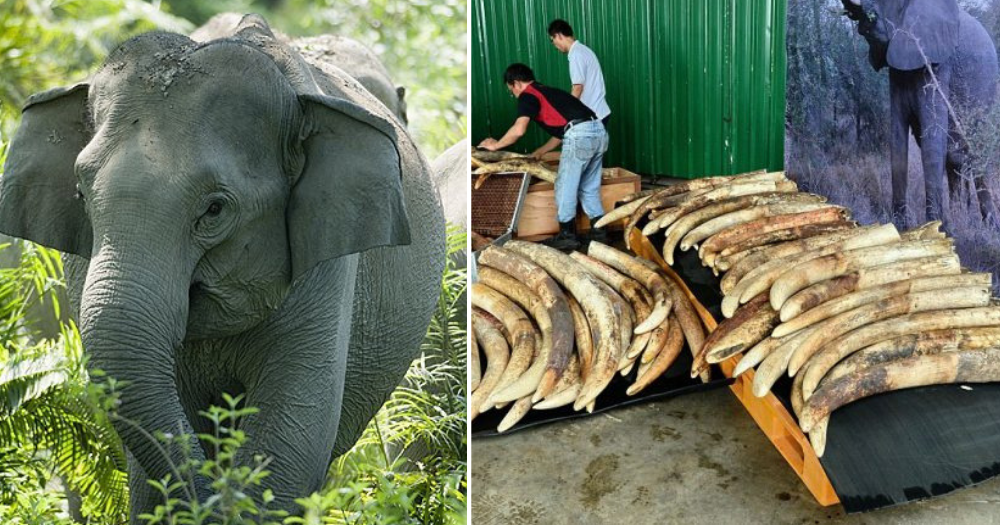In an co-evolutionary arms race against humans, elephants in Malaysia are apparently slowly losing their tusks.
Tusked male elephants now a rare sight in Sabah
Sabah Wildlife Department's assistant director Sen Nathan stated that in the past, he frequently spotted elephants with tusks as long as 2 metres.
https://www.instagram.com/p/Bpyd8H3FFe4/
Tuskless male Bornean Pygmy elephants, also known as the Borneo elephant, on the other hand, used to be an extremely rare sight.
Now though, such male elephants are becoming more common, reported The New Straits Times.
Sen said: "I have been involved in trans-locating elephants for more than 20 years and other senior colleagues dealt with the animal longer, more than 30 years, and now, we see this phenomenon becoming more common."
Sen has firmly placed the blame for this unusual phenomenon on anthropogenic causes such as "heavy poaching pressure".
Poaching prevalent in Malaysia
Malaysia is home to two subspecies of elephants -- the Asian elephant and the aforementioned Bornean pygmy elephant.
According to NST, there are an estimated 1,500 elephants across Sabah.
Sadly, aside from the threat of habitat loss, these elephant subspecies are at high risk due to ivory poaching.
In March 2018, four men who were part of an elephant poaching gang were arrested by Malaysian authorities, and in August later in the year, it was revealed that Malaysia was a major transit point for ivory.
Earlier in April this year, authorities accumulated a stash of 3.92 tonnes of ivory seized from various ports and airports between 2011 and 2017.
The ivory was worth an estimated RM13.3 million (S$4.3 million), reported Jakarta Post.
Malaysian authorities incinerated the huge haul of ivory, to prevent it from entering the black market.
Elephants losing tusks not only in Malaysia
It has been reported elsewhere that the phenomenon of elephants losing their tusks is not only occurring in Malaysia, but in other countries too.
As countries in Africa face increased ivory poaching, female African elephants start to give birth to young with higher chances of survival, which are elephants with shorter tusks, or no tusks at all.
In a 2015 study, researchers compared the tusks of two groups of elephants in Kenya -- elephants captured between 2005 and 2013, and elephants culled between 1966 and 1968.
The first group of elephants were survivors of a period of high poaching activity, which took place in the 1970s and 1980s, reported National Geographic.
Researchers found that elephants in the first group had much smaller tusks -- males had tusks one-fifth smaller than the latter group, while females had tusks a third smaller.
And this trend of smaller tusks in elephants born later has continued.
However, there is also healthy scepticism that elephants having no tusks are an evolutionary trait.
The scientific consensus is that evolution takes place over long geologic time scales of at least thousands to millions of years, rather than over decades.
Moreover, physical adaptations are known to occur in flora and fauna to cope with certain environmental pressures, which have nothing to do with evolution or changes to genetic code in such short time frames.
It is also uncertain if such a trait is heritable over such a short span of time.
Anti-poaching unit formed
With regards to Sabah's Bornean Pygmy elephants, Sen stated that he believed more research should be done on tuskless elephants in the country, and the implications of the phenomenon.
He added that he would like to "analyse" it further and "get more data".
These elephants, however, might soon see more protection.
The Sabah Forestry unit has announced the formation of a special anti-poaching unit to boost wildlife conservation in the state.
The team of 25 rangers specialising in anti-poaching operations started work on Sept. 1.
Top photo from Terra Incognita ECOTOURS /FB and ROSLAN RAHMAN/AFP/Getty Images
If you like what you read, follow us on Facebook, Instagram, Twitter and Telegram to get the latest updates.
